Part I – Rodent Infestation: How to Clean After It and Safety Gear (I)
Even though mice rarely carry rabies, there are several other deadly diseases that you can get from exposure to their urine, droppings, and saliva.
Here are the ones you should be concerned about as soon as you see signs of mice around, as well as during the process of cleaning up after an infestation:
- Plague – This is a bacterial infection caused by the pathogen Yersinia pestis. It can infect humans as well as other mammals. Rodents can be infected with this disease and transmit it to fleas that bite them and consume the rodent’s blood. From there, the fleas can quickly transfer the plague to any animal that they bite and humans. You can also get the plague from handling animal flesh that is contaminated with the bacteria. There are three types of plague that rodents and fleas can transmit. Bubonic plague symptoms include fever, chills, weakness, and swollen lymph nodes near the site where the bacteria entered the body. This is the most common plague you can get from fleas. Septicemic plague is similar to the Bubonic plague and can arise from it if left untreated. In Septicemic plague, bleeding can occur in the organs as well as the skin. It can also cause severe shock and abdominal pain. Finally, Pneumonic Plague can occur when you breathe in the bacteria responsible for the plague. In this case, you may develop fever and chills along with pneumonia that evolves rapidly. This is one of the main reasons you need to wear a bacteria-proof mask when cleaning up after a rat infestation; and why you should do everything possible to keep rodents out of your home and life. Even though the plague can be treated with antibiotics, it is still considered a deadly disease that you are best off avoiding.
- Tularemia – This is another bacterial infection that can be transmitted by ticks, as well as through contaminated air and water. If you touch infected meat or body fluids from an infected animal, you can also wind up coming down with Tularemia. As with the plague, ticks and deer fly consume infected blood from rodents and then transmit the bacteria to humans and other animals, including rabbits and hares. Tularemia symptoms include a fever over 104 degrees F, skin ulcers around the bite area, and swollen lymph glands near the bite site. If you did not get bitten by a fly or tick, you might have some different symptoms based on the point of entry. For example, if contaminated fluid touches your eye or gets onto a mucus membrane near the eye, you may wind up with eye inflammation and irritation. Similarly, if you inhale contaminated dust or other debris, you may get mouth ulcers, a sore throat, swollen lymph nodes, and swollen tonsils. While Tularemia is not usually fatal and can be treated with antibiotics, it is still a disease you can avoid by keeping rodents at bay, using appropriate safety gear when cleaning up after an infestation, and using good hygiene butchering meat.
- Hantavirus – This deadly virus is found in rodent urine and droppings. You come into contact with the virus when particles from these materials escape into the air and then are breathed in. You can also get Hantavirus from rodent bites and consuming food that has come into contact with contaminated saliva, urine, and feces. Unfortunately, there is no cure for Hantavirus. If you come down with this disease, early recognition can ensure that you have appropriate life support until the virus runs its course. Main early symptoms that can occur within 7 to 35 days of exposure to contaminated material include mid-body to shoulder muscle aches, fever, chills, tiredness, headache, dizziness, nausea, and diarrhea. Within just four days, you may also experience serious pulmonary symptoms, including shortness of breath that will lead to failure and death unless you are placed on a ventilator. At the current time, Hantavirus is mainly located in the western United States. Nevertheless, it never hurts to wear appropriate breathing gear and other safety devices so that you stay as safe as possible when cleaning up a mess left behind by rodents.
- Lymphocytic Choriomeningitis Virus or LCM – Another virus caused by exposure to infected urine, feces, and nesting material. If the pathogen comes into contact with broken skin, it can quickly get into your body and wreak havoc. I can think of no better reason to wear a full protective bodysuit, face shield, and hair covering when cleaning up after rodents than this particular virus. You never know where you might have a scratch, nick, picked scab, or even a paper cut that can become the pathway for this disease to enter your body. Women that are pregnant must be especially careful because this virus can cause a miscarriage. There are two stages of LCM. First, you may experience muscle and/or joint, nausea, vomiting, headaches, fever, sore throat, and tiredness. As the virus progresses, you will wind up with neurological symptoms associated with meningitis, encephalitis, or a combination of both. These symptoms include stiff neck, headache, confusion, drowsiness, sensory abnormalities, paralysis, shaking, and other neurological symptoms. Even though meningitis and encephalitis can be treated, they can still leave you with permanent impairments. As with other diseases caused or transmitted by rodents, it is better to avoid them as much as possible.
- Tick-Borne Lyme Disease – Since ticks are equal opportunity bloodsuckers, it should come as no surprise they will attack rodents right along with any other animal they happen to land on. In this case, Lyme disease and several other tick-borne pathogens can be transmitted between the tick and its rodent host and then to animals and humans.
- Fleas – As with ticks, you will find that rodents also harbor fleas in large numbers. These annoying insects can also carry diseases that can make you, your family, and your pets very sick.
How to Prevent a New Infestation
Once you have gone through a clean-up after rodent infestation, you are sure to be more motivated than ever when it comes to keeping them out of your home and yard. Here are some things you can do to prevent a new infestation, as well as curb an existing one:
- Traps – There are many kinds of traps on the market and some inexpensive ones that you can build on your own. Snap traps will work well; however, I recommend using the rat-sized trap even for smaller rodents. Unless you are dealing with baby field mice, adult-sized rodents will easily get out of the field mouse-sized traps and learn to avoid them in the future. When using these traps, be prepared to dispatch the rodent, as they rarely get caught in the neck or other vital areas. Use peanut butter for bait and flour for trails to the trap. You can also use glue traps; however, you must always be prepared to kill the rodent within a few minutes of hearing it on the trap, or it will escape.
- Electric Zapper Traps – Today, some people also opt to try electric zapper traps that will kill mice or rodents on contact. If you are squeamish about cleaning up a rodent that has been caught in a snap trap, don’t expect this option to be easier. You may wind up with a bloody, smelly mess inside the trap that you will have to clean up or wind up spending a lot of money for a new trap. At the very least, if you don’t want to clean up a snap trap, they are relatively cheap to replace.
- Bucket Traps – The most effective traps are bucket traps that you make on your own. Fill a bucket with water and add a ramp that will fall in when the rodent attempts to walk across from one side to the other. Since rodents cannot swim, all you have to do is fill the bucket enough so that they drown.
- Cruelty-Free Traps – Quite frankly, I don’t recommend “cruelty-free traps” that let you catch rodents and release them elsewhere. All you are doing is carrying a potential disease-bearing animal to another location where it can make someone else sick or kill them, including innocent children who may contact rodent feces and urine. Regardless of how you may feel about animals, this is one area where pushing the problem down the road isn’t the right answer, let alone a kind one.
- Natural Deterrents – Aside from peppermint, rodents also don’t like the smell of onions. You can cut an onion in sections and leave parts of it along walls and entryways to your home. Just remember, however, onions are poisonous to cats and other animals. Ensure that you put the onions in some wire cage or other container to prevent cats and other susceptible animals from getting into it.
- Poisons – Overall, rat poisons should be used as a last resort because they can also kill cats and other predators that consume the mice.
- Toxic Foods – Try using dry instant mashed potato flakes to kill rodents. Once the rodent consumes the flakes, they will expand quickly upon being exposed to moisture in the rodents digestive system and cause it to explode.
- Chocolate is also poisonous to rodents; however, it tends to be even more toxic to dogs and cats. Therefore, it is best to avoid using chocolate to kill mice.
- Baking soda may also be of use when it comes to killing rodents. However, be aware that dogs and cats can also be killed if they overeat unneutralized baking soda. When baking soda hits the acid in a rodent’s stomach, it will produce gas that causes it to explode. For cats and dogs, too much baking soda can cause electrolyte imbalances. If you use baking soda, only use small quantities near the trap or in an area where pets can’t get into it. This especially important if you have kittens, puppies, or smaller-sized animals that will be more susceptible to poisoning.
- Electronic Deterrents – If you do some research, you will find that many companies offer ultrasonic devices supposed to deter rodents, insects, and other unwanted animals from entering your home or other areas. While these devices may sound good on paper, their usefulness is limited because their operation range is very narrow. Unfortunately, if these devices were going to be as effective as you would want them to be, they would pose a threat to humans and other animals. While you can try using ultrasonic devices to try and drive rodents into trap areas, they don’t work well at all alone.
- Animals That Will Hunt Rodents – Without question, cats are excellent when keeping rodents under control. If you choose a new kitten, look for the one in the litter that chases everything and is the most active. When you bring the kitten home, be sure to use plenty of rodent-like toys during play periods and praise behaviors that mimic catching and killing rodents. Since this is already a natural behaver in cats, it is also very easy to shape and hone. Aside from being an excellent excuse for playing with your new kitten, it is also excellent training for when the kitten is old enough to go after mice. It is also essential to teach your kitten how to use scratching posts not to damage the furniture during this time. A cat that will be a rodent hunter needs his/her claws for the sake of safety and efficiency. Usually, once the kitten gets accustomed to using these posts and accepts them as territorial markers, they will use them instead of other items in the house. For outdoor locations, red tail hawks, falcons, eagles, and owls will all hunt rodents. To draw hawks to your yard, set up feeding stations for smaller birds. Eventually, the hawks and other raptors will come to your yard looking for the smaller birds. While they will also undoubtedly catch some of these birds, they will also go after rodents. Just be sure to keep cats and other small pets indoors since many of these birds can capture unwary pets and kill them in a matter of seconds. If you have room for them, ducks and geese will also hunt rodents. You may also have a large number of wild geese in your area. Since migratory bird laws protect these birds, make sure you know about any restrictions associated with luring them to your yard. It is essential to realize that geese can be very aggressive. If they become a problem in your yard, you may not be able to kill them without facing criminal charges. You are better off choosing some other animal or simply purchasing domesticated ducks and geese for rodent control from this perspective.
- Keeping Rodents Out of Food and Textiles – For the most part, rodents find food, water, and nesting materials using their sense of smell. Whether they smell flour, sugary materials, meat, or water, rest assured they will make their way to the source of that odor. While you cannot always prevent odors from escaping food items, you can put them in glass or metal containers that mice cannot chew through. Some plastics on the market will work for this purpose. Always use rat and mouse-proof containers with tight-fitting lids to reduce damage and spoilage as much as possible. That will also act as a deterrent since rodents will move onto the next promising target when they realize they can’t get into your food sources.
People tend to have many different reactions when they see a rodent in their home. Where my wife almost immediately reaches for a hammer and a bucket trap, other people might stop and think how cute the rodent is, while still others will begin shrieking.
Regardless of your initial response to seeing rodents, it is essential to get rid of them as quickly as possible, and then make sure you use proper steps and precautions for cleaning up the mess they leave behind. Learning how to clean up after a rodent infestation is an important skill, no matter whether you live in an apartment, your own home, or a homestead.


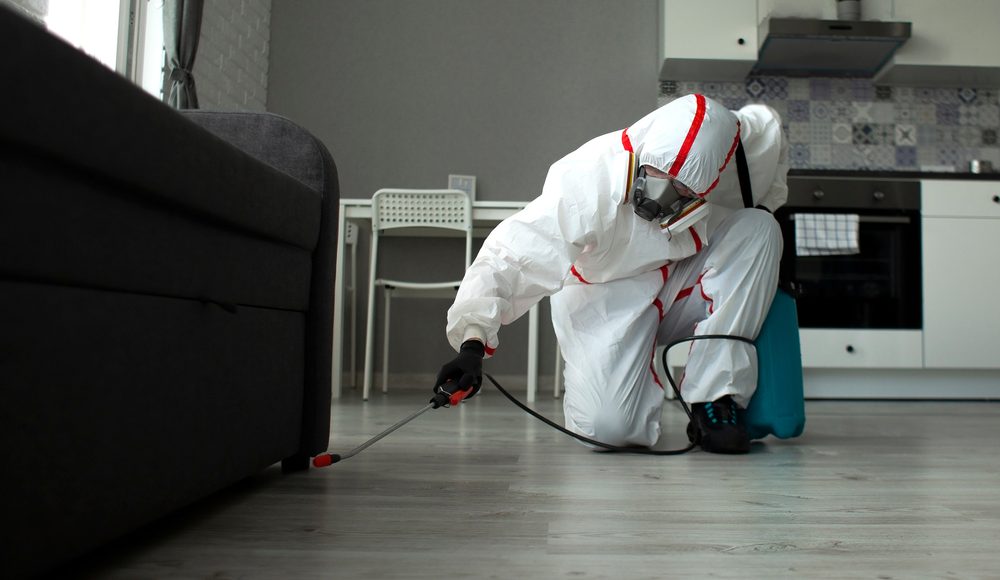

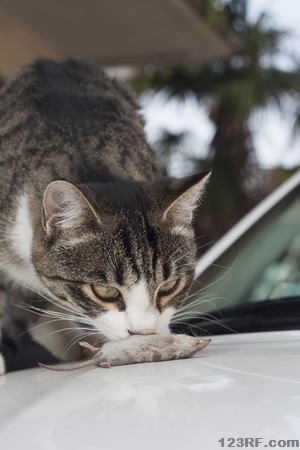
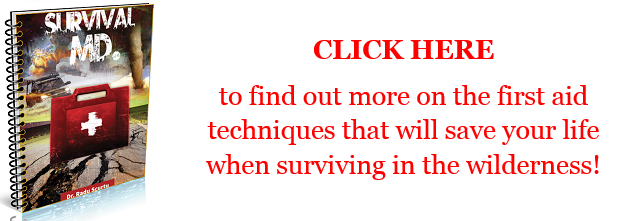
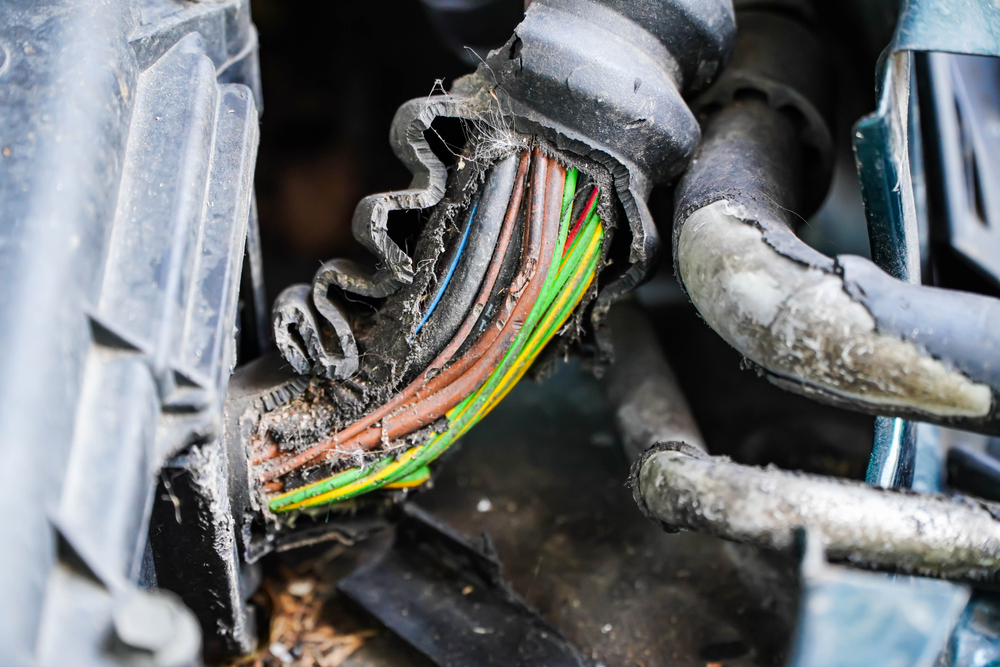
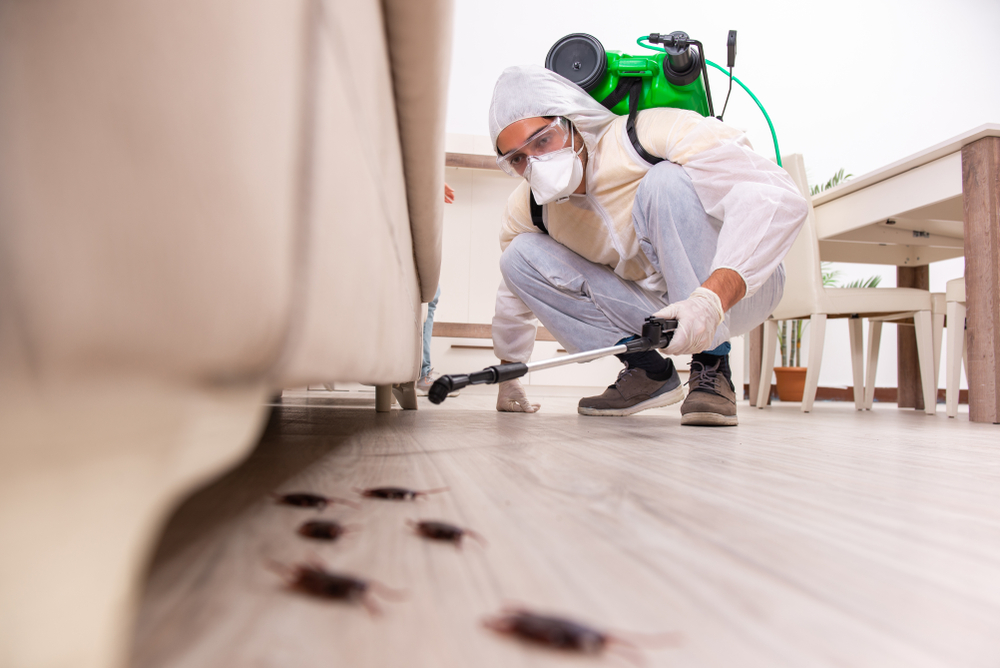

Skip | February 25, 2021
|
One correction to this article regarding poisons . . . I put poison in my garage to kill mice and I panicked when I saw one of my dogs eating a dead mouse that it had found. I called the vet and they told me, “We get this question a LOT! Don’t worry about it. The mouse metabolizes the poison, which is what kills it, so there’s no poison left in its system if your dogs eat them. So, it’s safe to use poisons as long as your dogs or cats can’t get into the poison, directly. If they eat a dead mouse or rat that the poison has killed, it’s safe for them.